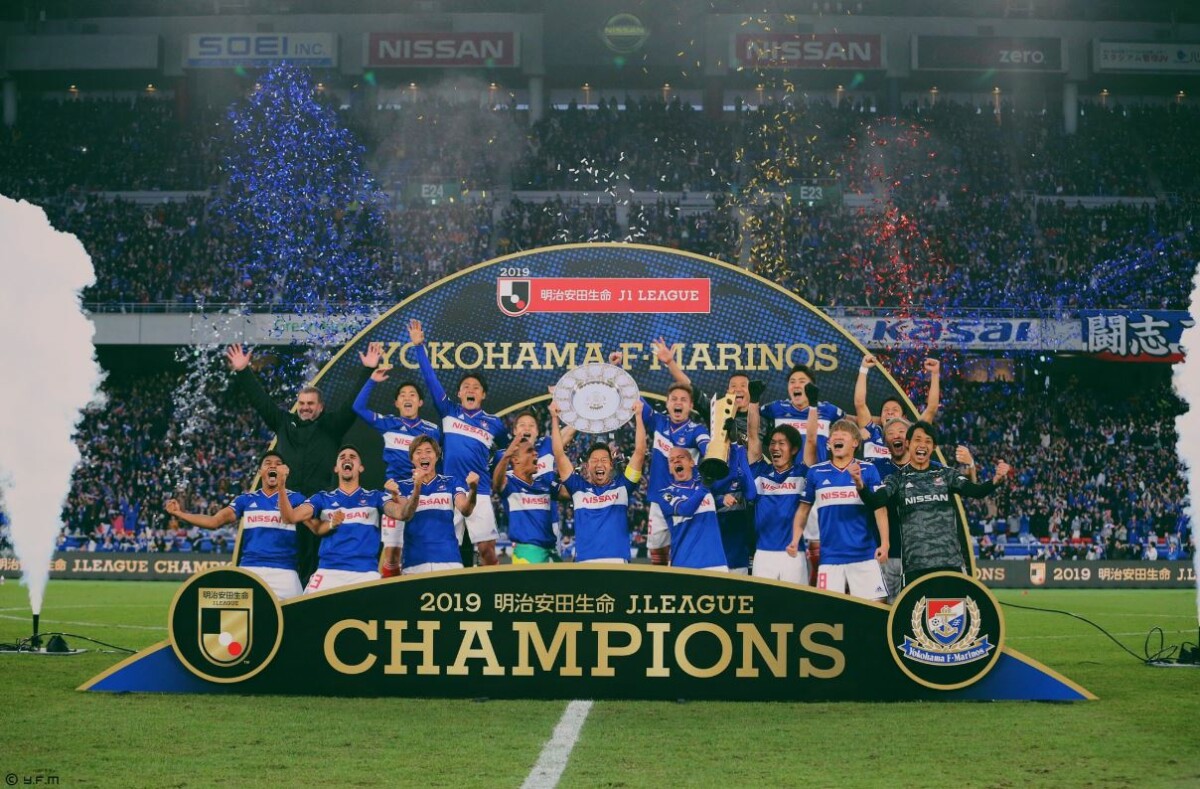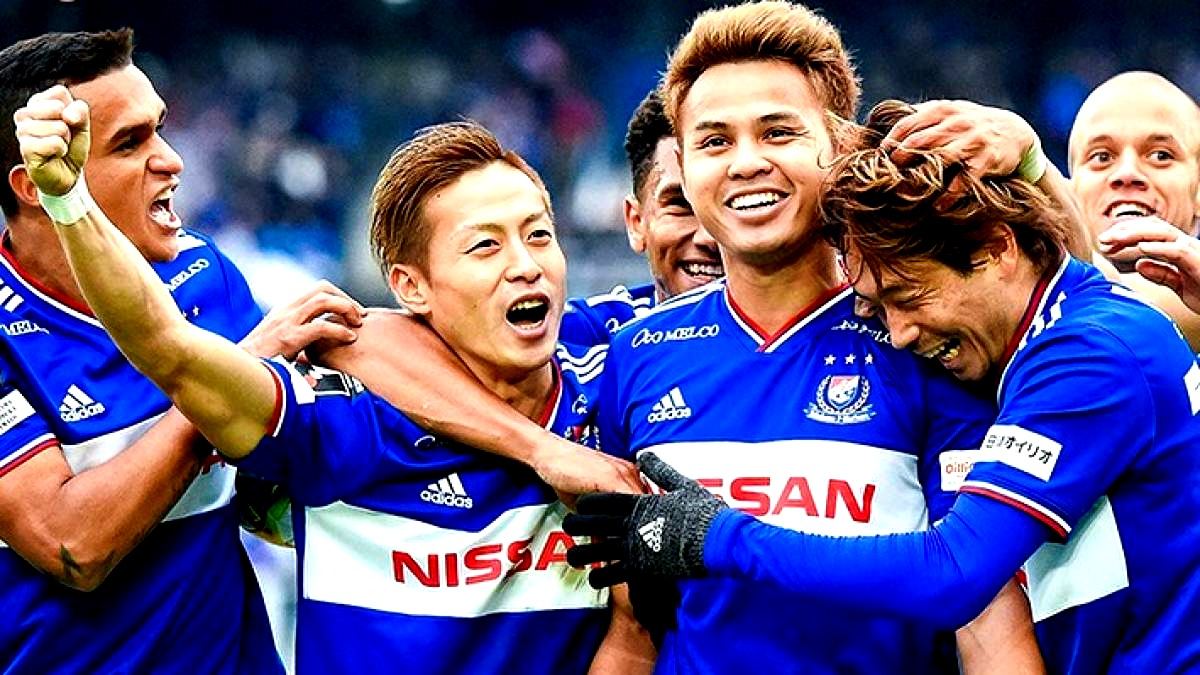League 1 Japan, or J1 League, is the top professional football division in the country, boasting a rich history and passionate fanbase. From its humble beginnings to its current status as a major force in Asian football, the J1 League has undergone significant transformation, attracting both domestic and international talent. This compelling league offers a unique blend of tactical prowess, intense competition, and vibrant fan culture, making it a captivating spectacle for football enthusiasts worldwide.
This analysis delves into the J1 League’s structure, prominent teams and players, matchday experience, economic aspects, future prospects, and provides a detailed look at a memorable match to illustrate the league’s dynamic nature. We’ll explore the league’s evolution, its challenges, and its potential for continued growth on the global stage.
League 1 Japan: A Deep Dive
The J1 League, Japan’s top professional football division, boasts a rich history, vibrant fan culture, and a steadily growing global presence. This article explores various facets of the league, from its historical development and current structure to its economic impact and future prospects.
J1 League: Overview
Established in 1993, the J1 League succeeded the Japan Soccer League, marking a significant step towards professionalization. The league currently comprises 18 teams, competing in a double round-robin format, where each team plays every other team twice, once at home and once away. This results in a 34-match season. Key regulations include strict financial fair play rules, designed to ensure the long-term stability of clubs.
The league operates under the jurisdiction of the Japan Football Association (JFA).
J1 League Compared to Other Asian Leagues
A comparison with other prominent Asian leagues highlights the J1 League’s position within the continental football landscape.
| League | Teams | Season Format | Prominent Clubs |
|---|---|---|---|
| J1 League (Japan) | 18 | Double Round-Robin (34 matches) | Kashima Antlers, Kawasaki Frontale, Yokohama F. Marinos |
| K League 1 (South Korea) | 12 | Double Round-Robin (38 matches) | Ulsan Hyundai, Jeonbuk Hyundai Motors, Pohang Steelers |
| Chinese Super League (China) | 18 | Double Round-Robin (34 matches) | Guangzhou Evergrande (formerly), Beijing Guoan, Shanghai SIPG |
Prominent Teams and Players
Several teams have consistently dominated the J1 League. Kashima Antlers, with their numerous titles, exemplify sustained success built on a strong youth academy and shrewd recruitment. Kawasaki Frontale’s recent dominance showcases a blend of tactical sophistication and individual brilliance. The impact of foreign players has been transformative, elevating the league’s overall competitiveness and attracting international attention.
Playing Styles of Prominent Teams
Kawasaki Frontale is known for its possession-based, attacking style, characterized by quick passing and fluid movement. Kashima Antlers traditionally employs a more balanced approach, combining solid defense with efficient counter-attacks. Yokohama F. Marinos often showcases a high-pressing, dynamic style focused on quick transitions.
Top 5 Highest-Paid Players in the J1 League (Illustrative Example)
The following list provides an illustrative example and should not be considered definitive due to the private nature of player contracts.
Discover more by delving into jersey manchester united 2024 further.
- Player 1: Position – Forward, Nationality – Brazilian
- Player 2: Position – Midfielder, Nationality – Japanese
- Player 3: Position – Defender, Nationality – Argentinian
- Player 4: Position – Goalkeeper, Nationality – Japanese
- Player 5: Position – Midfielder, Nationality – Australian
Matchday Experience and Fan Culture
Attending a J1 League match offers a unique and immersive experience. The atmosphere is often electric, with passionate fans creating a vibrant and engaging environment. While similar to other leagues globally in terms of general enthusiasm, the J1 League showcases a unique blend of fervent support and respectful conduct. Ultras and organized supporter groups play a significant role in creating the matchday atmosphere, through chants, banners, and choreographed displays.
Typical Matchday Experience

- Arrival at the stadium, often hours before kickoff to soak in the pre-match atmosphere.
- Engaging with fellow fans, participating in chants and songs.
- Enjoying the match, experiencing the energy and excitement of live football.
- Post-match discussions and analysis with fellow fans.
- Departure, reflecting on the match and looking forward to the next one.
Economic and Business Aspects
The financial structure of a typical J1 League club involves a complex interplay of revenue streams. Sponsorships, broadcasting rights, merchandise sales, and ticket revenue are all crucial contributors to club finances. Successful commercial partnerships, such as those between clubs and major corporations, play a significant role in driving revenue growth.
Estimated Revenue Streams for a Top-Tier J1 League Club (Illustrative Example), League 1 japan

| Revenue Stream | Estimated Percentage | Example | Notes |
|---|---|---|---|
| Broadcasting Rights | 30% | Deals with television networks | Fluctuates based on viewership and contract negotiations |
| Sponsorships | 25% | Partnerships with major corporations | Dependent on the club’s popularity and brand image |
| Matchday Revenue | 20% | Ticket sales, concessions | Affected by stadium capacity and attendance |
| Merchandise Sales | 15% | Jerseys, scarves, other club-branded items | Dependent on fan engagement and marketing efforts |
League Development and Future Prospects
The JFA has implemented various strategies to enhance the J1 League’s global standing, including investing in youth development and promoting international collaborations. Attracting international talent remains a challenge, however, due to competition from more established leagues. Over the next 5-10 years, the J1 League is predicted to experience continued growth, driven by increased investment, improved infrastructure, and a rising global interest in Japanese football.
The long-term success of the J1 League will depend on several key factors: continued investment in youth development, attracting and retaining top international talent, and fostering a strong and engaging fan culture.
Illustrative Example: A Single Match Analysis
A memorable match could be described, focusing on a high-scoring encounter between two rival teams. The pre-match build-up could involve media hype and intense fan anticipation. Post-match analysis might center on tactical decisions made by the coaches, individual player performances, and the impact on the league standings. The atmosphere could be described as electric, with intense chanting, passionate displays, and the roar of the crowd echoing through the stadium.
The J1 League stands as a testament to the growth and evolution of Japanese football. While facing challenges in competing with some of Europe’s top leagues for international talent, its unique blend of skillful play, passionate fans, and strategic development positions it for continued success. The future of the J1 League appears bright, promising a captivating spectacle for years to come, as it continues to refine its strategy and enhance its global presence.

